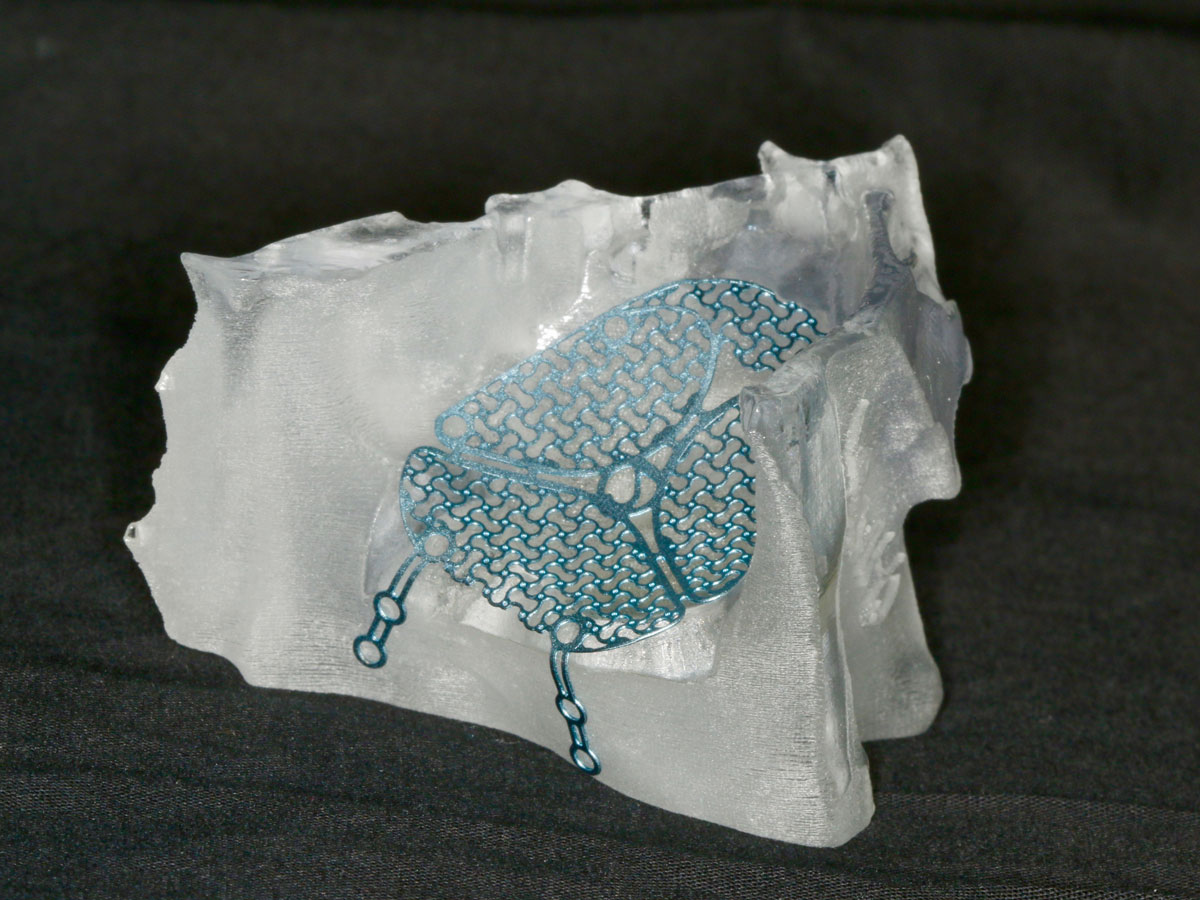Stratasys (Nasdaq: SSYS) announces that surgeons at the University Hospital Basel in Switzerland are cutting operating times for complex cranio-maxillofacial surgeries by over 33 percent with the use of 3D printed surgical guides, reducing risk of complications and improving patient outcomes. The hospital reports savings up to 2,000* Swiss Francs per surgery.
The hospital installed a Stratasys 3D printer in the Department of Cranio- and Maxillofacial Surgery, creating its own 3D printing lab, which has transformed its surgical planning processes. “Many of our trauma patients arrive with complex, life-threatening injuries that necessitate the creation of quick and efficient treatment plans,” explains Dr. Dr. Florian Thieringer. “Having access to in-house 3D printing on-demand has simply revolutionized the way we work, most notably for cranio-maxillofacial injuries.”
Surgical time for complex orbital floor reconstruction reduced by 33 percent
According to Dr. Dr. Thieringer, this is especially the case with orbital floor and serious zygomaticomaxillary complex fractures. Here, the visibility is restricted due to the limited access, and the risks of error can be high. Previously, the team would need to plan reconstructions using standard titanium meshes. These meshes needed to be cut and formed by hand in the operating theatre to ensure an exact fit. This often resulted in an increased operating theatre time and cost and could negatively impact the patient. However, the use of Stratasys 3D printing technology now enables the team to produce a patient-specific model prior to the operation, all within two hours of receiving a patient’s CT scan.
“The use of 3D printed models for the planning of interventions and implants has reduced surgery time by up to 33 percent,” Dr. Dr. Thieringer says. A surgery which previously saw our patients under anaesthesia for over an hour-and-a-half, has now been reduced by a third to just one hour.” With an estimated cost per minute of 70 Swiss francs, the result is a staggering saving of around 2,0002 francs per operation3. “The impact on our patients is significant, says Thieringer, “and less time under anaesthesia means the risk of complications is substantially decreased.”
Removing complexity from the surgical process
For cases such as a complex orbital floor fracture, the team regularly makes use of titanium implants.
“With the highly-accurate 3D printed models, standard titanium implants can be shaped individually to create a hybrid patient-specific implant,” says Dr. Dr. Thieringer. “This reduces any cutting and suture time needed during the operation and also reduces the need to source patient-specific titanium implants from external suppliers. Also, thanks to the transparency of MED610 modelling material, we can create highly precise, anatomically correct models. This not only allows us to visualize parts of the anatomy otherwise obscured or limited during surgery, but it also reduces the need for patients to return for revision operations.”
Additionally, the ability to show accurate anatomical models allows doctors to better explain procedures to patients, ensuring they are more at ease prior to surgery.
Michael Gaisford, Director of Marketing, Healthcare, Stratasys concludes, “The University Hospital Basel’s continued advancement of 3D printing within its surgical practice reinforces why it is at the forefront of medical research and development in the region. By leveraging precision PolyJet 3D printing for patient-specific anatomical models, the hospital is not only improving patient care, but underpinning the benefit of this technology for reducing operating time, costs and mitigating risks.”
As the largest medical center in northwest Switzerland, the University Hospital Basel has over 50 specialist clinics, 750 beds and treats up to 350,000 patients a year.
Subscribe to our Newsletter
3DPresso is a weekly newsletter that links to the most exciting global stories from the 3D printing and additive manufacturing industry.






















